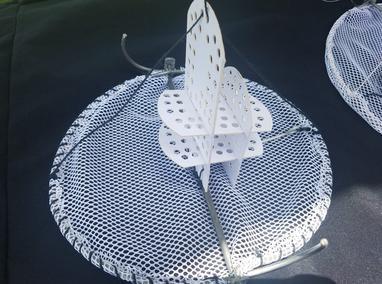Lionfish-Traps
Lionfish Trap Images and Videos
NOAA Dome Trap with original FAD.
Dome Trap has double Jaws, but only the inner jaws close. Purse trap has one set of Jaws. The problem with this design is that the bottom ring creates a flat surface that does not easily drop straight down. It also takes a lot of space up on the deck of the boat, limiting its usefulness in a commercial operation.
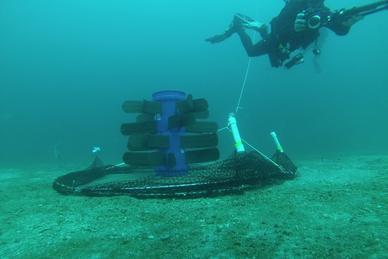
NOAA video deploying original Purse Trap.
After the testing and issues related to the dome trap, Dr. Giddings modified the design and created the Purse Trap. Unlike the Dome Trap, the purse trap has only one set of jaws, folds and descends gracefully through the water causing virtually no bottom impact damage.
The original purse trap used the same FAD (Fish Aggregation Device) used in the Dome Trap. However, after testing, the original FAD proved to cause too much drag and still took up considerable space on the deck.
Purse Trap with FAD that reduces drag
The FAD was redesigned to minimize the drag caused by the original FAD. However, this design did not reduce weight nor save much space on the deck of a commercial fishing boat.
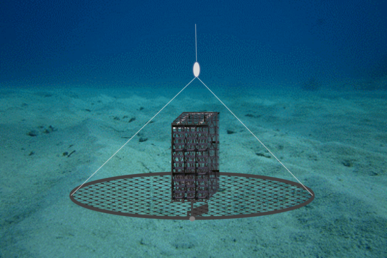
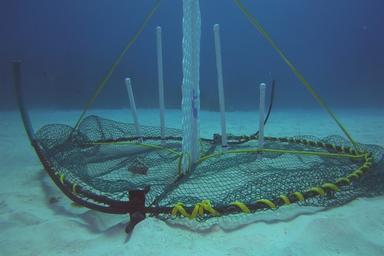
Version 6 Purse Trap built in Cayman Islands
The current version of Dr. Giddings Purse Trap resolves the FAD drag problem by using a flat panel allowing flat closing of the jaws on deployment. A float was added to the line to the surface that keeps the FAD erect, and a ring was added at the top of the FAD to assure complete closure of the trap. Extra netting was added to cause the netting to billow out when pulled to the surface. Billowing keep the lionfish near the FAD until the jaws were completely closed.
Dr. Steven Gittings Dropping Foldable FAD Trap
This 13 minute video shows the trap from deployment, drifting to the bottom, impact on the bottom and the affect on nearby marine life.
Volunteers for ReefSave.org will do similar video and photography work, collect data and make observations. All of this material will be provided to NOAA and will be made available to the public.
This page shows the history and modification of various lionfish traps developed by NOAA.
Below is "Going Deep for Lionfish", a two page summary by NOAA explaining the invasive
lionfish problem and the proposed solution.
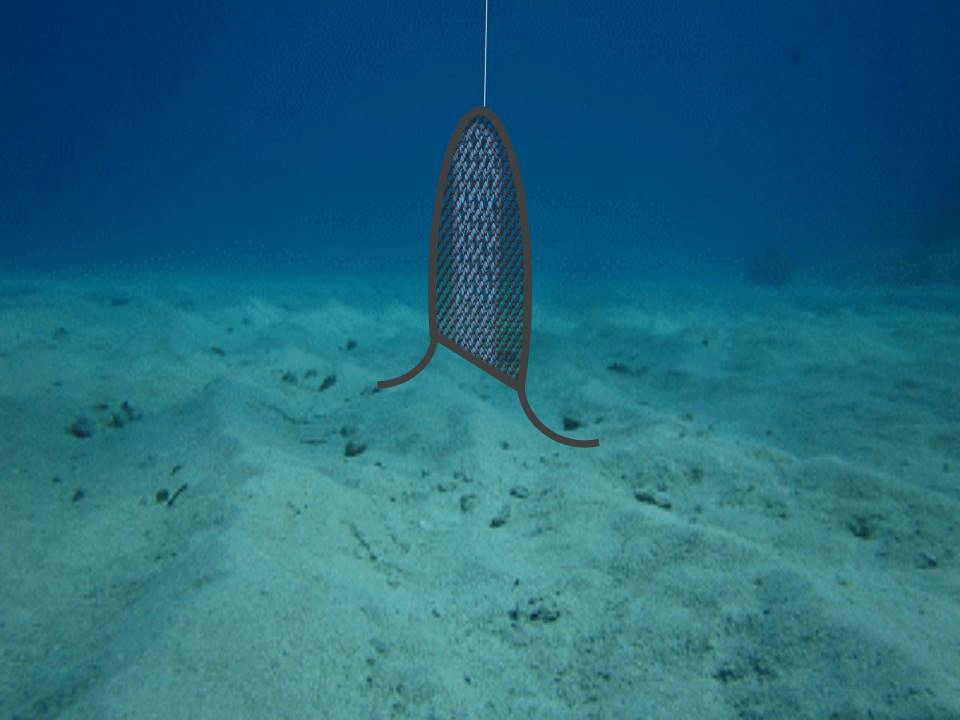
Version 6 of the Purse Trap
Confinement traps, similar to a lobster type trap, have by catch issues. The Dome Trap focused on the by catch issue. This was later modified into the Purse Trap that remains the primary design being tested. The Purse Trap is now in a state where it is compact, deploys properly, has no impact damage, no by catch, and little risk of Ghost Fishing.
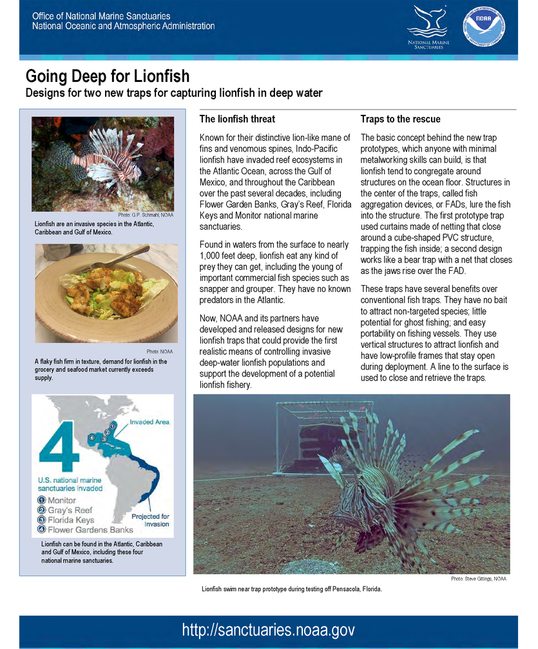
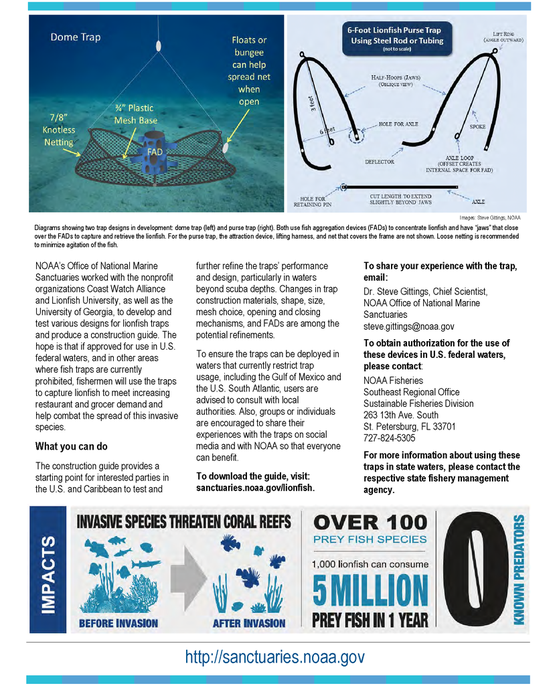
Delaware Folding FAD
This variation of the purse trap incorporates a folding FAD, is made of aluminum rather than rebar, is smaller in size and uses the FAD itself to assure closure of the jaws. This design has not been fully tested.
